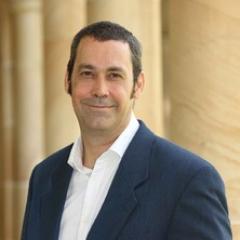Linking biological processes to solids behaviour and performance in anaerobic lagoons
With the potential for low-cost renewable energy generation plus effective wastewater treatment, the economic and environmental benefits of covered anaerobic lagoons (ALs) are compelling. While ALs are not suited to all applications, the number of these plants operating in Australia continues to increase - ALs now treat waste from approximately 70% of Australia’s dairy production (excluding pasture), over 60% of piggeries and 70% of meat processing capacity. ALs are installed at major domestic treatment plants in Victoria, South Australia, New South Wales and Queensland.
However, while ALs are a well-established technology, there are significant knowledge gaps regarding biological dynamics, solids behaviour, and their relation to process performance. This leads to uncertainty regarding appropriate management strategies for optimising performance, particularly biogas production. Poor performance is common for lagoon processes, particularly as waste solids accumulate, which can cause lagoon failure and require re-excavation of lagoon contents. Scum formation is also emerging as a major operating challenge for ALs. Scum damages cover infrastructure which dramatically increases maintenance costs and, where covers are breached, represents an environmental hazard due and process safety risk.
This project will couple biological and physical analysis to develop understanding of how biological process influence solids behaviour such as sludge and scum layer development, and how these in turn influence process performance. Experimental work will utilise novel pilot systems, large-scale AL sampling and computational fluid dynamic modelling which will utilise experimentally determined parameters including sludge shear and compression rheology.
Funding
- Melbourne Water
Collaborators
- Water Research Australia
- The University of Melbourne
Project Outcomes
Outcomes of this work will allow water utilities and agri-industries to better plan and manage the impacts of variable conditions on AL performance, allowing for improved energy recovery and reducing the cost of wastewater treatment services for end users.
Specific outcomes will include:
- Development of AL design and operating guidelines for improved performance.
- Modelling parameters toward development of an integrated hydrodynamic-biochemical model of AL systems.
Project members
Other members
- Dr Stephen Tait
- Peter Wardrop
- Catherine Rees


